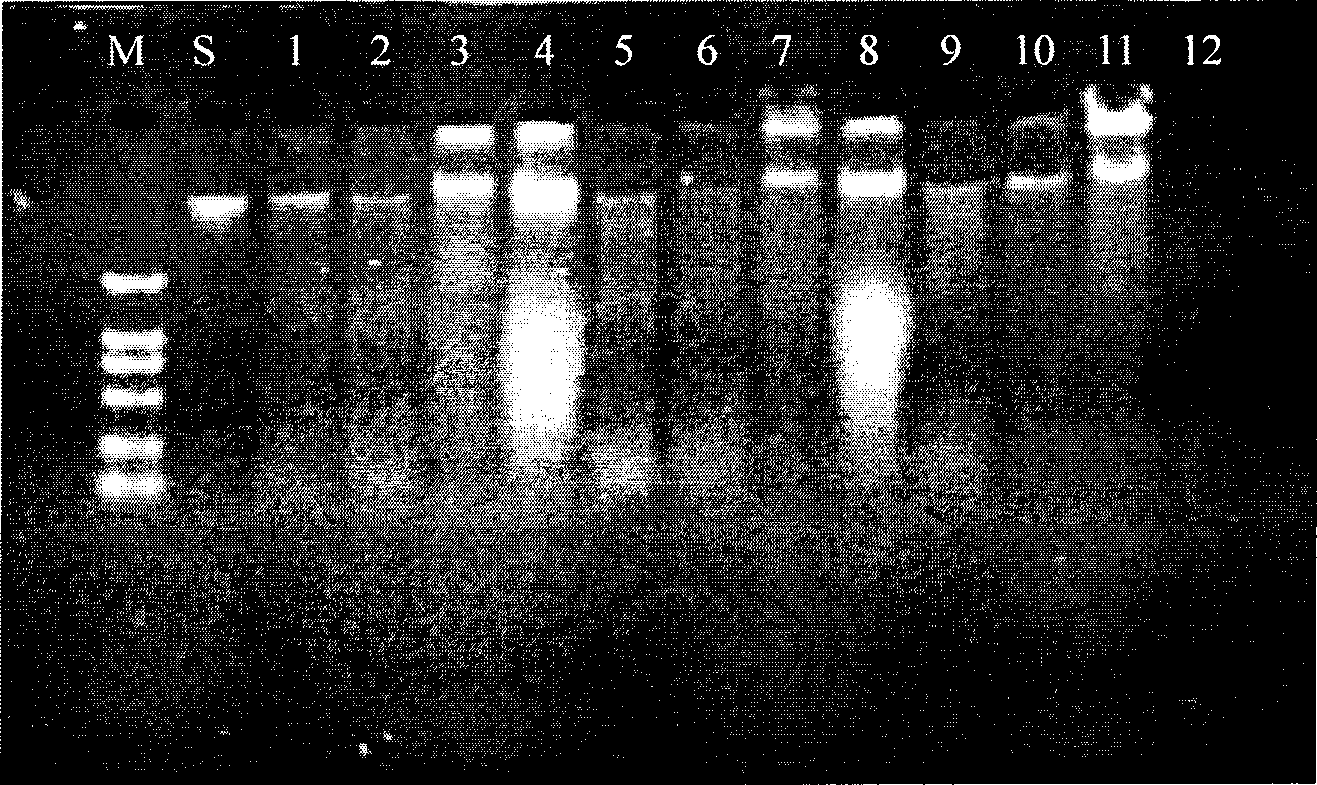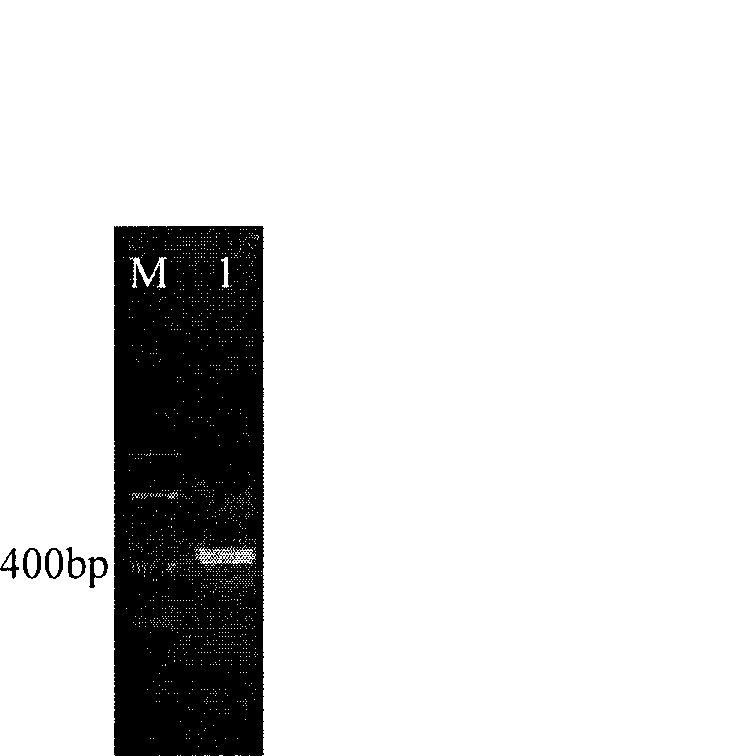Extraction method of cubilose whole genome DNA
An extraction method and a genome-wide technology, applied in the field of biochemistry, can solve the problems of low DNA purity and difficult experiments, achieve good reproducibility, stable results, and reduce co-precipitation of glycoproteins and DNA
- Summary
- Abstract
- Description
- Claims
- Application Information
AI Technical Summary
Problems solved by technology
Method used
Image
Examples
example 1
[0032] 1. Material: Baiyan bird's nest, purchased from Singapore Jinxing Company.
[0033] 2. Method:
[0034] Take the dry product of Baiyan bird's nest and grind it into a 120-mesh fine powder, weigh 0.1200g, add 1.2ml of SDS buffer, bathe in water at 65°C for 2 hours, and shake gently 4 times in the first half hour. Centrifuge at 12000×g for 5 min at 4°C to take the supernatant. An equal volume of chloroform-isoamyl alcohol mixture was added to the obtained supernatant, and after mixing evenly, the supernatant was collected by centrifugation at 12000×g for 5 min at 4°C. Add 0.1 volume of CTAB buffer solution to the obtained supernatant at room temperature (20°C), mix evenly, place it at room temperature for 15 minutes, then add chloroform-isoamyl alcohol mixed solution equal to the volume of the mixed solution, mix well, and place at 4°C at 12000 Centrifuge at × g for 5 min to take the supernatant. Add 0.7 volume of isopropanol at -20°C to the obtained supernatant, mix w...
example 2
[0040] 1. Material: Xueyan bird's nest, purchased from Singapore Jinxing Company
[0041] 2. Method:
[0042]Take the dried bird's nest product of Xueyan and grind it into a 120-mesh fine powder, weigh 0.1200g, add 1.2ml of SDS buffer, bathe in water at 65°C for 2 hours, and shake gently 4 times in the first half hour. Centrifuge at 12000×g for 5 min at 4°C to take the supernatant. An equal volume of chloroform-isoamyl alcohol mixture was added to the obtained supernatant, and after mixing evenly, the supernatant was collected by centrifugation at 12000×g for 5 min at 4°C. Add 0.1 volume of CTAB buffer solution to the obtained supernatant at room temperature (20°C), mix evenly, place it at room temperature for 15 minutes, then add chloroform-isoamyl alcohol mixed solution equal to the volume of the mixed solution, mix well, and place at 4°C at 12000 Centrifuge at × g for 5 min to take the supernatant. Add 0.7 volume of isopropanol at -20°C to the obtained supernatant, mix w...
example 3
[0048] 1. Material: Swiftlet bird’s nest, purchased from Singapore Jinxing Company
[0049] 2. Method:
[0050] Take the dried swiftlet nest and grind it into a 120-mesh fine powder, weigh 0.1200g, add 1.2ml of SDS buffer, bathe in water at 65°C for 2 hours, and shake gently 4 times in the first half hour. Centrifuge at 12000×g for 5 min at 4°C to take the supernatant. An equal volume of chloroform-isoamyl alcohol mixture was added to the obtained supernatant, and after mixing evenly, the supernatant was collected by centrifugation at 12000×g for 5 min at 4°C. Add 0.1 volume of CTAB buffer solution to the obtained supernatant at room temperature (20°C), mix evenly, place it at room temperature for 15 minutes, then add chloroform-isoamyl alcohol mixed solution equal to the volume of the mixed solution, mix well, and place at 4°C at 12000 Centrifuge at × g for 5 min to take the supernatant. Add 0.7 volume of isopropanol at -20°C to the obtained supernatant, mix well and immed...
PUM
 Login to View More
Login to View More Abstract
Description
Claims
Application Information
 Login to View More
Login to View More - R&D
- Intellectual Property
- Life Sciences
- Materials
- Tech Scout
- Unparalleled Data Quality
- Higher Quality Content
- 60% Fewer Hallucinations
Browse by: Latest US Patents, China's latest patents, Technical Efficacy Thesaurus, Application Domain, Technology Topic, Popular Technical Reports.
© 2025 PatSnap. All rights reserved.Legal|Privacy policy|Modern Slavery Act Transparency Statement|Sitemap|About US| Contact US: help@patsnap.com


